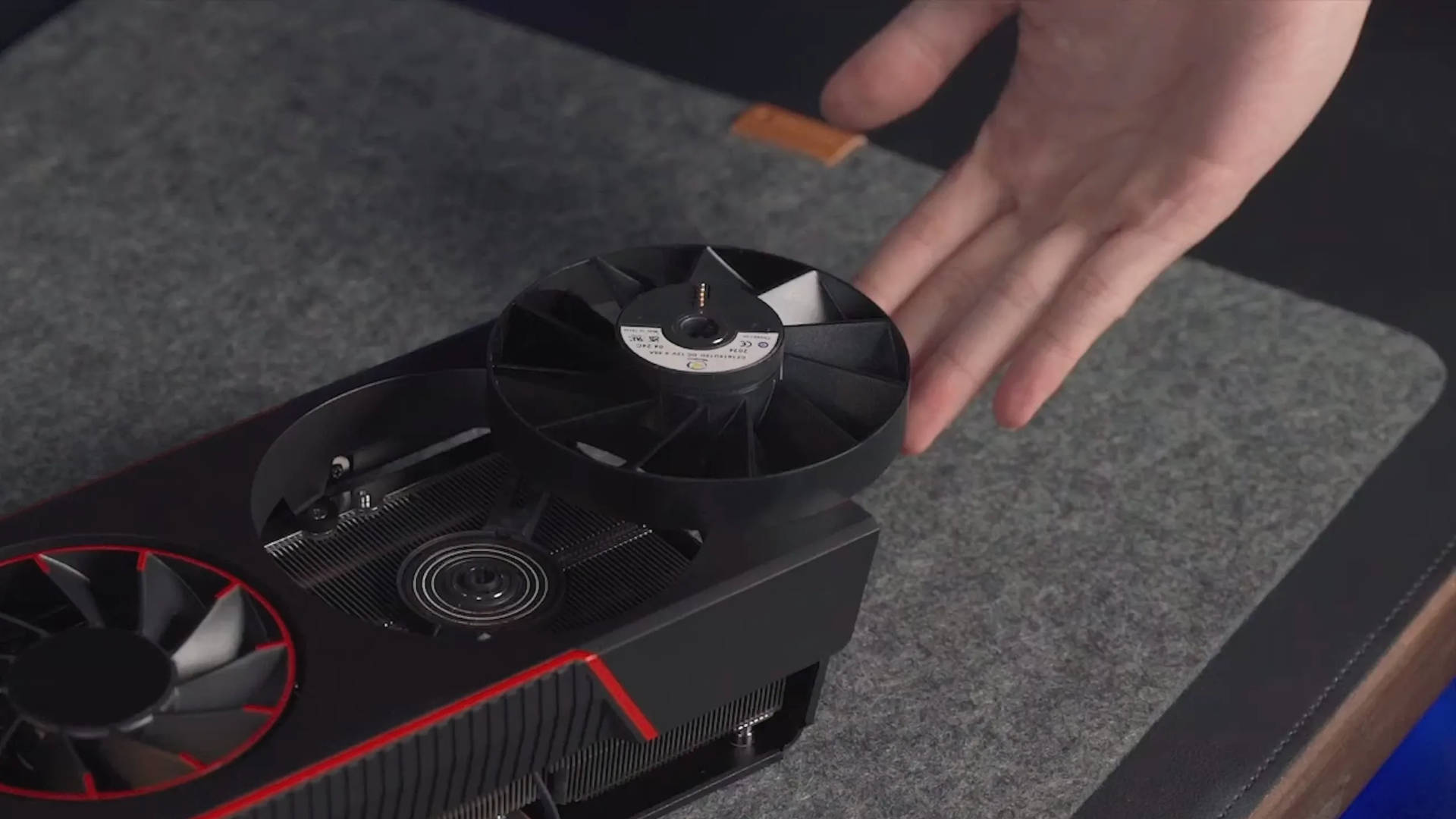Have you ever wanted to throw a cooling fan at a graphics card and watch it magically snap into place? Do you dream of solving the curse of fan hub axle separation that has "plagued traditional GPUs"? Fancy the idea of being able to attach 3 kg worth of fans to a graphics card? If the answer is yes to any of these questions, then you'll be pleased to know that XFX's new Magnetic Air range of Radeon graphics cards lets you do all of these.
We had suspected that something like this was coming our way, from the teaser video that XFX had posted last week. But now the full details have been released and we can confirm our guess was correct: hot-swappable cooling fans. Specifically, these are magnetically attached to the hub and use a series of circular traces in the hub and metal pins in the fab, to transmit power and PWM data.
According to XFX, not only do these fans have "improved longevity" and "stable performance for the entire life of the fan", but they also make "fan hub axle separation a thing of the past"—something that has apparently "plagued traditional GPUs." I'm clearly well out of the loop here as it's not something that I've ever experienced in a graphics card.
Come to think of it, I've not once had to replace a cooling fan for a GPU because it's failed. I've cleaned and lubed some in the past, to reduce how much noise they make, and I changed entire systems for better thermal performance, but never a renegade fan or three.
Cheap, nasty fans do just fall off the axle once they've worn away over time but has this really been a plague? If it was then something would have been done about it by now, so there's a fair degree of hyperbole to that statement. That's not to say XFX's system is without merit, as it could well be a much better setup than what one normally gets on a graphics card. Without independent testing, though, you'll just have to take XFX's word on the benefits.
The new Magnetic Air fans have been applied to three RDNA 3-powered Radeon graphics cards—RX 7900 XTX, 7900 GRE, and 7800 XT—with some of these coming in a white colour option. Fancy fans aside, the stand-out feature for me is the use of Honeywell PTM7950, as the thermal interface material (TIM) between the GPU die and heatsink.
PTM7950 is a material that's solid at room temperature but turns all goopy at higher temperatures. Typically known as a phase change material, it's better than standard thermal paste for GPUs because it won't creep out from underneath the heatsink when squashed down.

Graphics chips that use lots of power often suffer from high hotspots which only get worse over time, because the thermal paste doesn't stay in a uniform distribution. The use of this phase change material pretty much solves that issue entirely.
Normally, PTM7950 is fiddly to apply, as the material is very fragile, so it's great to see a graphics card vendor pre-apply it for you. Hopefully, more vendors will offer this, especially on top-end models.

Best CPU for gaming: The top chips from Intel and AMD.
Best gaming motherboard: The right boards.
Best graphics card: Your perfect pixel-pusher awaits.
Best SSD for gaming: Get into the game ahead of the rest.
Two of the Magnetic Air models sport a minor bump to their clocks, compared to AMD's reference designs. For example, the Qicksilver AMD Radeon RX 7900 GRE Magnetic Air comes with Game and Boost clocks of 2,052 and 2,395 MHz respectively—9% and 7% higher than standard.
That's not a huge difference and you're unlikely to notice it in games, even testing one back-to-back with a standard Radeon.
One might expect prices for the Magnetic Air graphics cards to be painfully high but XFX has kept them relatively sensible. The Mercury RX 7900 XTX Magnetic Air is $979.99 at Newegg and the RX 7800 XT version is $529.99 at Newegg. Yes, you can get cheaper versions of both Radeon GPUs, and they'll run just as fast, but they won't have PTM7950 or fans that you can flip out whenever you fancy.







